Some thoughts and discussions from me.
Before we get into today’s post – I only have one or two spots left open in my online boot camp program that starts September 8th! It’s your last chance to sign up for 8 weeks of training, nutrition, lifestyle coaching, and seeing RESULTS. If you’re interested in fat loss of 5-10 pounds of more, leaning out, gaining strength, and getting excited about your training again, you can sign up HERE – or learn more info here.
—
Good morning, friends! How was your weekend?
Shane and I spent a few days (Wednesday-Saturday, to be exact) in Telluride, Colorado, hiking, sight seeing, eating, and relaxing.
It was just lovely.
I have a different post coming up this week about staying on track while traveling (don’t ad nauseum yet! This one is different!) but today I want to talk about tracking your stats when it comes to training.
I actually talked about this on Periscope the other day, but it’s an integral part of training that amazes me how much it gets ignored.
Unless you’re extremely new to training or very lucky, two things are absolutely necessary to see results:
1) Where you’re currently at (in terms of your goals)
2) The steps you need to take to get to where you want to be
Of course, there are a dozen steps in between 1 and 2 in order to actually get to #2, and tracking your stats is one of the key pieces of the puzzle.
Unfortunately, we can’t just make one change and get to #2 in a day. It takes days, weeks, months, or maybe even years, depending on how lofty your goals are. Over that time, we can’t just do what we think or feel like doing that day. Well, we can, but it will likely take you much longer to get there, if you get there at all.
In order to make consistent progressions and see results, we have to be constantly assessing. What’s necessary for assessment? Tracking our progress.
Tracking our progress/stats along the way not only allows us to see how we’re progressing from week to week or month to month, but it also
- let’s us know if we’re staying on track to our goal, or if we need to buckle down
- builds self-efficacy by showing us the results our hard work is getting over time
- shows us when it’s time to progress, or move on to a new phase
- serves as accountability for making our progressions and goals
- serves as guidance on how to progress to the next phase
Simply put, tracking stats is crucial.
That leads us to the inevitable question: What Should I Be Tracking?
Good question! First, let’s start with what we should put in our training log.
For my clients, I have each person on their own individual dashboard (even my boot camp clients) where they can access everything we’re logging and tracking during our training. On my platform, they can see their workout calendar, training plan, workouts and exercise library, past workouts, upcoming workouts, weekly and monthly progress, and more. In other words, this dashboard is meant to set them up for success in regards to tracking.
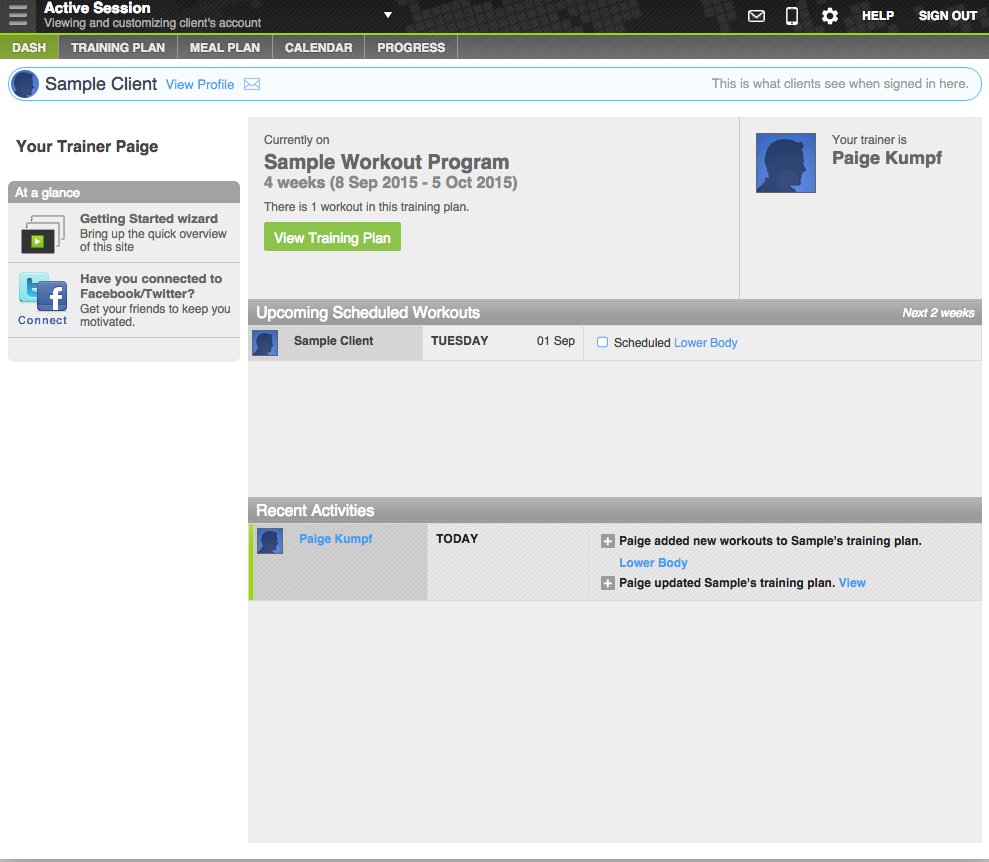
Training Tracking
Now when I write their workouts each week, we keep track of and log 5-7 factors. I don’t use all of them for all of my clients, but I use most of them for most of my clients. The factors are:
1. Exercise Selection
Some fundamental movement patterns have hundreds of variations of exercises, like the squat. For a client new to lifting, we might start with a body weight box squat the first couple weeks, then the body weight squat, then a goblet squat, and so on. Exercise selection should change as you progress.
2. Equipment
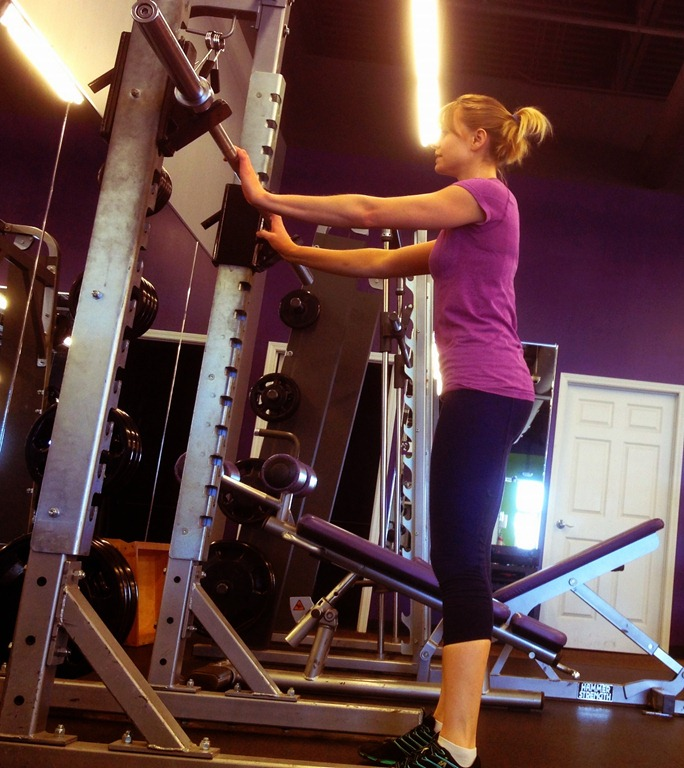
Depending on your fitness level, progression, goal, or where the exercise is at in the workout, equipment might change from week to week or month to month, as well. For example, if we’re doing our front squat toward the end of the workout, I might have my client do a reverse hack squat, just to ensure proper range of motion while that CNS (central nervous system) is already taxed.
3. Grip/hold variation
There’s more than one way to hold an implement (barbell, DB, cable handle, etc.) and each way has a different purpose, intent, and difficulty level. It’s important to mix up the grip in certain exercises like the chin up and row, and mix it up as you progress or lift heavier weight, like the deadlift.
4. Weight
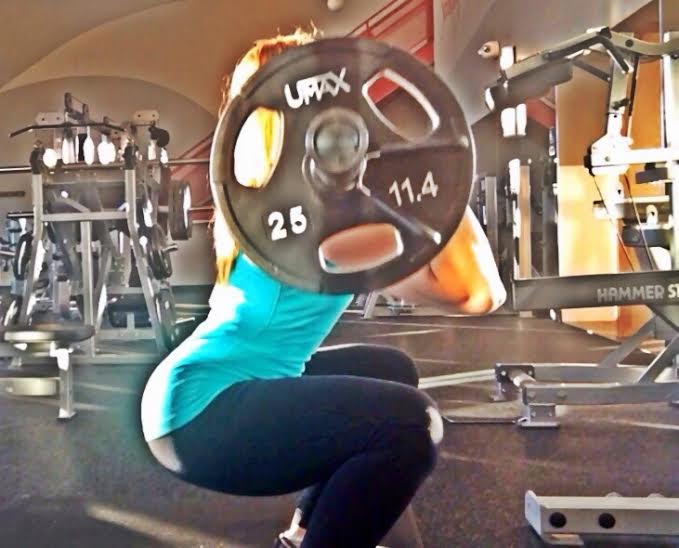
This one’s pretty self-explanatory. Lifting heavier weights in the prescribed rep range makes an exercise more intense/difficult/progressed.
5. Reps & Sets
Reps and sets can change either when moving to the next phase or program in a training plan, or from day to day, depending on the clients’ goal and response level. Reps and sets is one of most common manipulated variants in a training program.
6. Tempo
This is one that I only bring out after training with a client for 3+ months, or on specific exercises. Tempo manipulation is a wonderful way to put your muscles under more time under tension. My favorite way to manipulate the tempo is to extend the eccentric contraction, which emphasizes the micro tears in the muscle (and generally leads to some pretty awesome soreness the next day.)
7. Feeling
Possible the most important variable: how did it feel?? If we don’t prioritize and concentrate on how a certain exercise, movement, or workout feels, we’re just going through the motions at best, and at worst, could get injured!
[Tweet “‘Feeling’ could be the most important thing in your training log.”]
…So that’s a handful, right? It’s also why I try to take care of a good part of the tracking – especially for my in person clients; so that they can focus on their training.
Physical Tracking
Now, in addition to logging our training stats, we also keep track of our physical progress. Most of my clients have at least one physical goal. Whether that’s body composition like to lose body fat, lean out, tone up, or put on muscle, we keep track of those stats, as well. Now, this part isn’t obsessively, of course. But every 2-4 weeks, we make sure we’re making progress toward our goals via the following methods:
1. Clothes-ometer
This one is primarily for those interested in fat loss, and I learned it from Rachel Cosgrove: try on a pair of too-tight jeans at the beginning of your training. Try them on again every other week, and they should fit just a little better each time, if you’re staying on track.
2. Pictures
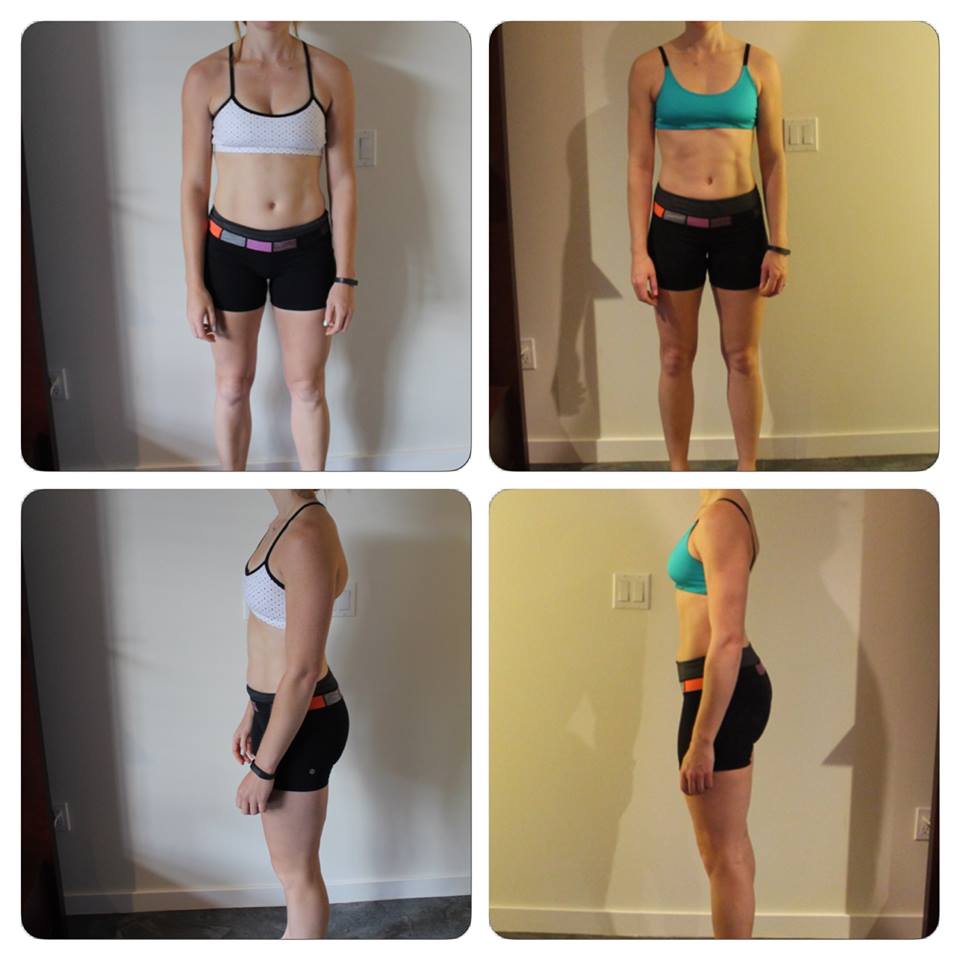
(that be me, a year ago, after ramping up my training program and working with my own nutrition coach.)
I try to have all of my clients at least take before pictures. Sometimes it’s a little mentally painful, but by knowing that it’s simply a tracking measurement, and applying some basic principles as to how you take them, they can be so helpful in staying on track.
3. Measurements
I have some of my clients take measurements, as well – especially those who want to gain strength and lose fat.
Scale weight is optional, and only if it won’t mess with my clients’ heads, and only if they’re only weighing once a week, max. The scale tends to mess with peoples’ heads, and its numbers don’t always make sense in terms of progress. I prefer to leave it out. My personal favorite way to track physical progress is through pictures. I encourage all of my clients to take before photos, and pictures along the way.
Nutrition Tracking
I also use nutrition tracking with my clients, but this varies greatly as to exactly how much tracking goes into it by client. Depending on the client, here are some various ways we’ll track nutrition:
- macronutrient split by grams
- macronutrient split by portions
- hand-anatomy portions by meal
- focus on 1-2 meals per day
- focus on specific habits
- complete intuition
There are many more factors that trainers and coaches and fitness enthusiasts track, but these are the ones I find to help the most in terms of getting my clients to their goals. Additionally, if we tracked many more, it’d get too cumbersome and overwhelming. As I always say, our fitness and nutrition should enhance our lives, not BE our lives. The less we can think and worry about and still get results, the better.
So there you have it! The importance of tracking your training progress? Pretty damn important if you ask me!
*I will say that if you simply workout to move more and have no specific goals at the time, you don’t necessarily need to track your stats. And as always, above all, move in a way that brings you JOY!
Do you track your workouts at all? If so, what do you track?



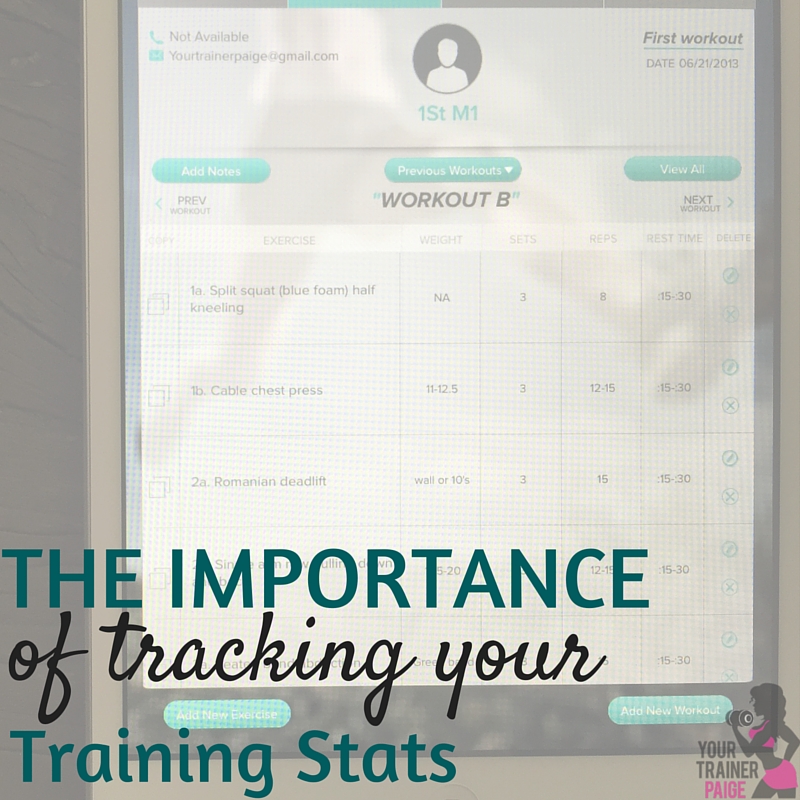
What a great post and an often overlooked topic! You know, it’s one of the hardest things to convince athletes to track, in my experience (even though it’s an easy one). 🙂
Heather @ FITaspire recently posted…25 Resources for Running
It’s also so easy to think you’ll remember – or write it down later, but then never do! (I know I’ve even done that myself!)
This is awesome. I just want to say thank you for all of your posts. It’s great to see someone provide well-educated, accessible, quality information about fitness!